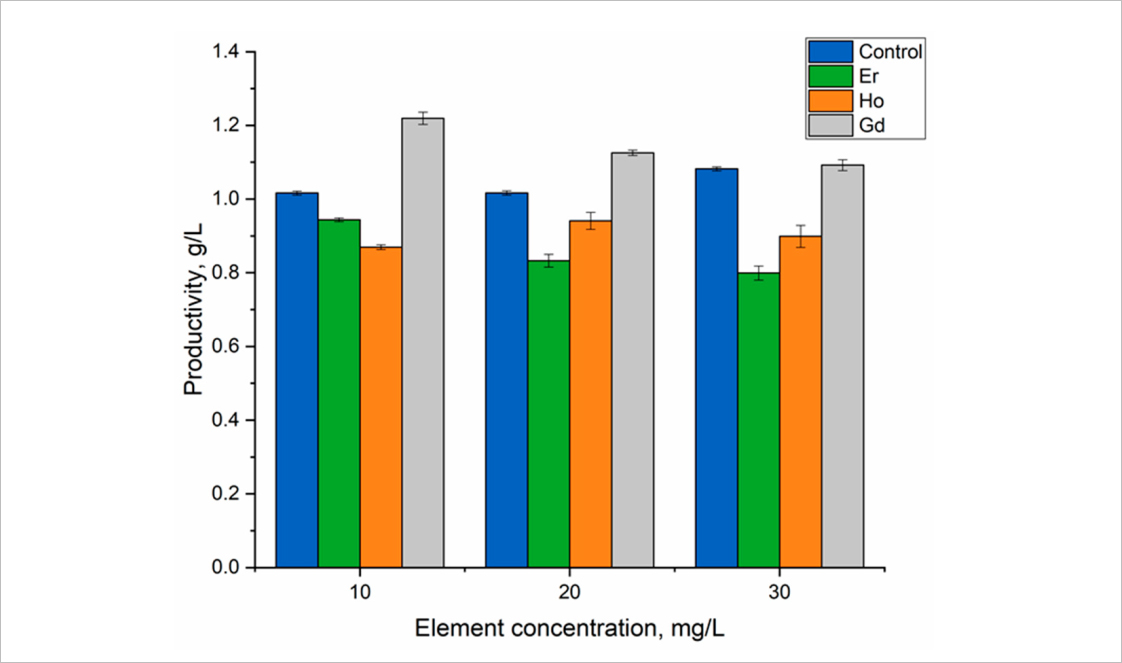FLNP JINR researchers evaluated effect of rare-earth metals on cyanobacteria
News, 20 September 2024
Scientists of the Laboratory of Neutron Physics at JINR, in collaboration with colleagues from the Technical University of Moldova and Horia Hulubei National Institute for R&D in Physics and Nuclear Engineering (Romania), evaluated the holmium(III), erbium(III), and gadolinium(III) accumulation by cyanobacteria Arthrospira platensis using neutron activation analysis and elements’ effects on biomass quantity and biochemical composition. The elements had different effects on the primary biomolecule content, suggesting that holmium(III) and erbium(III) were more toxic for Arthrospira platensis than gadolinium(III).
 Effects of holmium(III), erbium(III), and gadolinium(III) on A. platensis productivity when introduced into the cultivation medium at different concentrations
Effects of holmium(III), erbium(III), and gadolinium(III) on A. platensis productivity when introduced into the cultivation medium at different concentrations
Rare-earth elements are released into the aquatic environment as a result of their extensive use in industry and agriculture, and they can be harmful for living organisms. The researchers studied the effects of holmium(III), erbium(III), and gadolinium(III) when added to a growth medium in concentrations ranging from 10 to 30 mg/L on the accumulation ability and biochemical composition of Arthrospira platensis.
According to the results of the neutron activation analysis, the uptake of elements by cyanobacteria depended on the dose. Adding gadolinium(III) to the growth medium did not significantly affect the amount of biomass, whereas erbium(III) and holmium(III) reduced it up to 22% compared to the control. The effects of rare-earth elements on the content of proteins, carbohydrates, phycobiliproteins, lipids, β carotene, and chlorophyll a were evaluated.
Microorganisms published an article about this study in 2024. Among the authors are FLNP JINR employees: Head of the Neutron Activation Analysis and Applied Research Sector Inga Zinicovscaia and Head of the Gamma Spectrometry Group Dmitrii Grozdov.